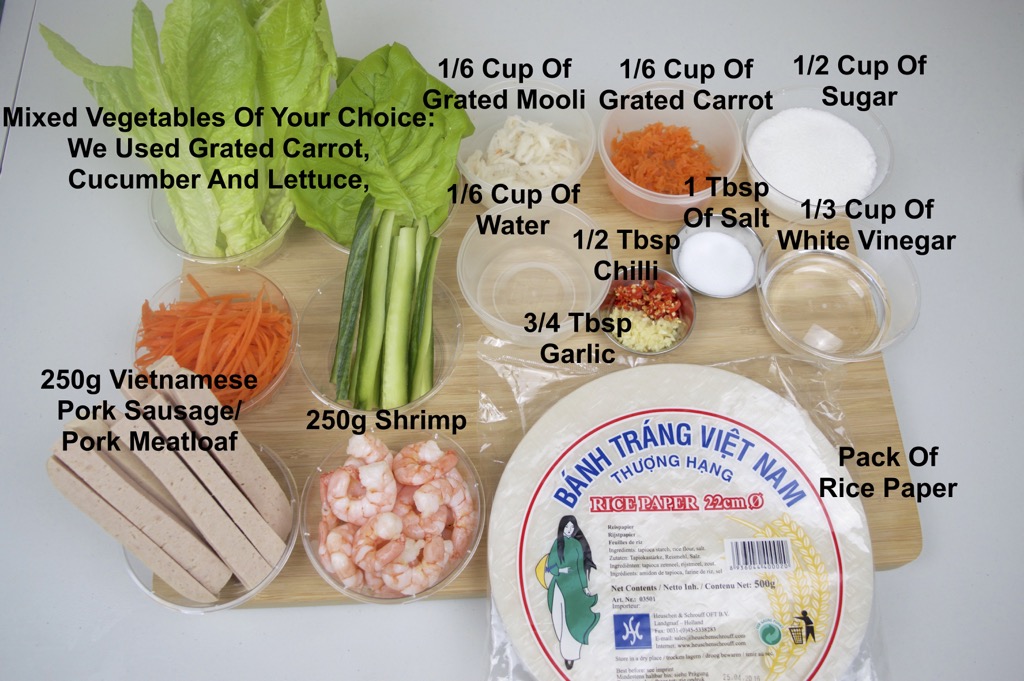Vietnamese Spring Rolls: A Fresh and Flavorful Delight
Vietnamese spring rolls, also known as gỏi cuốn, are a popular dish that showcases the vibrant and refreshing flavors of Vietnamese cuisine. These delicious rolls are filled with a variety of fresh ingredients and wrapped in delicate rice paper. In this article, we will explore the origins, ingredients, preparation, and serving suggestions for Vietnamese spring rolls. Whether you're a fan of Vietnamese cuisine or new to this delightful dish, this guide will provide you with all the information you need to enjoy the authentic flavors of Vietnamese spring rolls.
Origins and Significance of Vietnamese Spring Rolls
Vietnamese spring rolls have a long history and are deeply rooted in Vietnamese culinary traditions. They are believed to have originated in the northern region of Vietnam, where rice paper and fresh herbs were plentiful. Originally, spring rolls were associated with Tet, the Vietnamese New Year, and symbolized prosperity and luck.

(Vietnamese Spring Rolls)
Key Ingredients and Fillings
Vietnamese spring rolls are known for their fresh and vibrant fillings. The main ingredients include rice paper wrappers, rice vermicelli noodles, lettuce or other leafy greens, and a combination of herbs such as mint, cilantro, and Thai basil. Additional ingredients may include protein options like cooked shrimp, sliced pork, or tofu, as well as julienned vegetables like carrots and cucumber.

Preparation Process for Vietnamese Spring Rolls
Preparing Vietnamese spring rolls involves a simple yet meticulous process. First, you need to gather and prepare all the ingredients, ensuring that they are sliced, julienned, or cooked according to the recipe. Next, soak a rice paper wrapper in warm water until it becomes pliable. Carefully transfer it onto a clean surface, such as a dampened kitchen towel.
Layer the ingredients, starting with a bed of lettuce or greens, followed by rice vermicelli noodles, protein, herbs, and vegetables. Fold the sides of the rice paper over the filling, then roll it tightly from the bottom, making sure to keep the filling compact and the roll secure. Repeat this process for each spring roll.
(Vietnamese Spring Rolls Recipe)
Serving Suggestions and Dipping Sauce
Vietnamese spring rolls are typically served fresh and at room temperature. They can be enjoyed as a light appetizer, a healthy snack, or a main course when accompanied by other dishes. The rolls are often served with a flavorful dipping sauce, such as nước mắm pha (a mixture of fish sauce, lime juice, sugar, garlic, and chili) or peanut sauce (made with peanut butter, hoisin sauce, lime juice, and soy sauce). These sauces add a delightful tanginess or richness that complements the freshness of the rolls.
Variations and Adaptations
Vietnamese spring rolls offer endless possibilities for customization and adaptation. You can experiment with different fillings, such as marinated grilled chicken, crispy tofu, or even tropical fruits like mango or pineapple. Vegetarian and vegan options are also popular, with fillings like marinated tempeh or seasoned mushrooms. The choice of herbs and vegetables can vary based on personal preferences and seasonal availability.
Vietnamese spring rolls are a delightful culinary creation that captures the essence of fresh and healthy Vietnamese cuisine. With their vibrant colors, light textures, and burst of flavors, these rolls are a true delight for the senses. Whether enjoyed as an appetizer or a main course, Vietnamese spring rolls offer a refreshing and satisfying dining experience. So, gather your favorite ingredients, master the art of rolling, and savor the taste of these delicious Vietnamese treats.